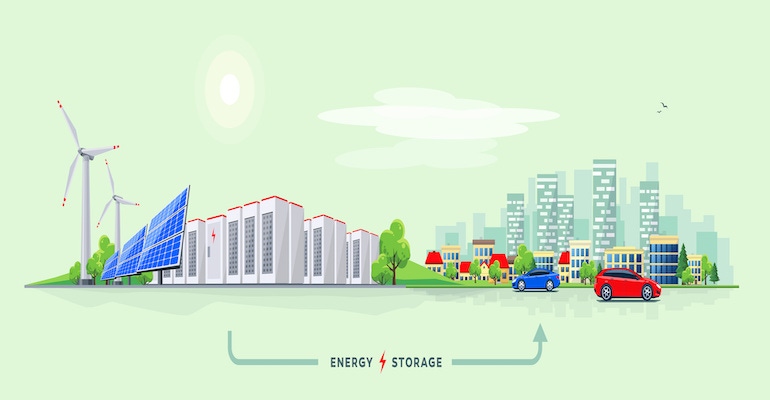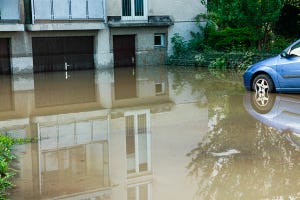Organic electrolytes can help with both life cycles and the costs of future water-based redox flow batteries.
August 20, 2021

Finding ways to safely and cheaply store large amounts of energy from renewable sources like solar and wind is the key to building a reliable low-carbon power grid. Although lithium-ion batteries grab all the headlines for grid storage, the raw materials used in these large-scale batteries might be better used in the batteries that power electric vehicles (EVs). There is another technology available however in the form of reduction and oxidation (redox) flow batteries (RFBs).
RFBs are constructed such that the electrolytes, containing the chemically-active active redox chemicals are stored in external tanks. Reaction cells are typically arranged into stacks and the electrolytes are pumped through the cells during charge and discharge. Because the storage capacity is determined by the size of the electrolyte tanks and the concentration of redox reactants, it is possible to build very large RFBs for a relatively low cost. The power output of the RFB is determined by the number and configuration of cell stacks and the electrode components.
Although in theory, the system should be both simple and cheap, current RFBs use high-cost and environmentally hazardous active materials for their electrolytes to attain the necessary and desired life cycle. Cheaper, water-soluble organic materials have been proposed as future electrolytes in the RFBs (namely aqueous organic RFBs, or AORFBs) and organic-based (polymer) electrolytes can be obtained from renewable sources and manufactured at very low cost. However, the lack of stable water-soluble organic electrolyte materials, particularly the positive electrolyte (catholyte), is a major hurdle of AORFBs.
“Development of high-performance RFBs will enrich the category of electricity energy storage systems and complement the shortcoming of intermittent renewable energy sources, therefore largely improving the usability of electricity powered facilities, such as vehicles,” said Dr. Yu Zhu, a professor at the University of Akron’s (UA) School of Polymer Science and Polymer Engineering, in a UA news release.
Stable Catholyte
Zhu’s research group, in collaboration with scientists in Pacific Northwestern National Laboratory (PNNL), successfully developed the most stable catholyte (positive electrolyte) to date in AORFBs and demonstrated cells that kept more than 90% of capacity over 6,000 cycles, projecting more than 16 years of uninterrupted service in a pace of one cycle per day.
The team not only demonstrated a state of art catholyte in AORFBs but also provided a brand-new strategy to design water-soluble catholyte to enhance their solubility (energy density) in water. Instead of attaching a hydrophilic functional group to improve the solubility of the molecules, the researchers change the symmetry of molecules, which results in “a dramatic enhancement of solubility.” With the new design strategy, the team plans to design new materials they can further mature the RFBs.
“To significantly improve the performance of aqueous organic RFBs, the urgency of developing a new catholyte is crucial,” said Zhu.
Kevin Clemens is a Senior Editor with Battery Technology.
About the Author(s)
You May Also Like





